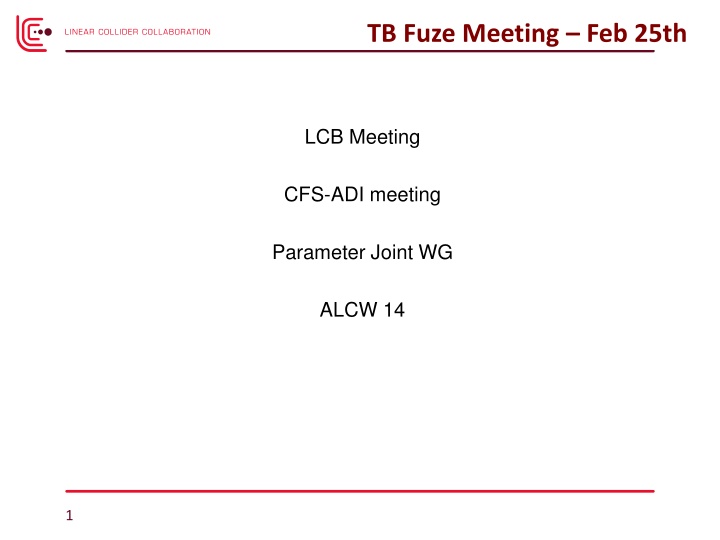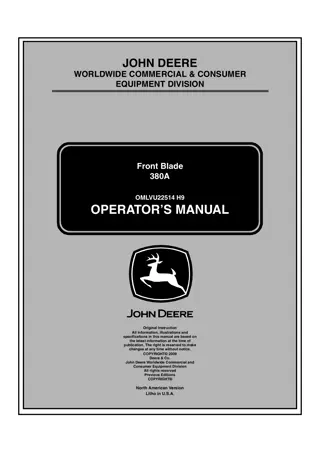
Energy Implementation Phases & Machine Parameters Update
Implementing phased energy stages can minimize construction costs and accelerate the schedule for physics research at 250 GeV. The transition to higher energies requires strategic planning and adjustments in cryomodule production rates. Official machine parameter updates are crucial for project alignment and funding considerations. Coordination between stakeholders is essential to streamline processes and ensure project efficiency.
Download Presentation

Please find below an Image/Link to download the presentation.
The content on the website is provided AS IS for your information and personal use only. It may not be sold, licensed, or shared on other websites without obtaining consent from the author. If you encounter any issues during the download, it is possible that the publisher has removed the file from their server.
You are allowed to download the files provided on this website for personal or commercial use, subject to the condition that they are used lawfully. All files are the property of their respective owners.
The content on the website is provided AS IS for your information and personal use only. It may not be sold, licensed, or shared on other websites without obtaining consent from the author.
E N D
Presentation Transcript
TB Fuze Meeting Feb 25th LCB Meeting CFS-ADI meeting Parameter Joint WG ALCW 14 1
ILC Status 1. Linear Collider Overview (Evans) 2. ILC Status (Harrison) 3. CLIC Status (Stapnes) 4. Linear Collider Detector Status (Yamamoto) 5. ILC Laboratory Structure and Management (Komamiya) 6. PAC Status (Komamiya) 7. LCC MOUs (Komamiya) 8. Regional Reports (Bagger, Gao, Le Diberder) 9. Future LCB Meetings 10. Any Other Business 2
ILC Status Management activities An Energy Phased Project Schedule comments SRF LCB DESY March 2014 Mike Harrison 3
Energy Phasing - Summary A phased energy implementation results in a minimal change to the construction project costs and shortens the first-phase construction schedule slightly, allowing physics at 250 GeV centre of mass to begin up to 1 year earlier. The complete tunnel construction and injector systems are necessary in the first stage to achieve this state of affairs. Beam dynamics considerations argue for an initial accelerating stage and a hybrid scheme involving three linac sections is somewhat more favourable for luminosity upgrade schemes at 250 GeV CoM energies. We estimate that one-year of commissioning and 4 years of operation at 250 GeV is necessary for 250 fb-1 of integrated luminosity. A subsequent shutdown of one year will be needed to attain 500 GeV. The most significant change involves the cryomodule/HLRF production rate and the corresponding project funding profile. LCB DESY March 2014 Mike Harrison 4
ILC (>28MV/m) ~65%
JLAB Single cell 45 MV/m @ 2 10e10 6
Summary Almost any energy staging scenario is feasible with some cost and schedule implications. Multiple installation stop-starts is inefficient, cryomodule production stop-starts are very disruptive. LCB needs to take the lead in officially updating machine parameters. CFS pre-project schedule will drive the accelerator design work and the overall project schedule at this point. Some level of pre-project funding is needed for CFS work in Japan. 8
CFS-ADI joint meeting U. of Tokyo April 8-9-10 Meeting Charge by March 11th Need to sort out attendees(~15) 9
Parameters Joint WG Jim Brau co-convener Jenny List Fujii Keisuke Tim Barklow Nick co-convener Kaoru Jie Gao Sort out energy phasing 10
ALCW 14 Fermilab May 12-16 Machine conveners MH & Steinar Stapnes How shall we determine the ILC program 11



